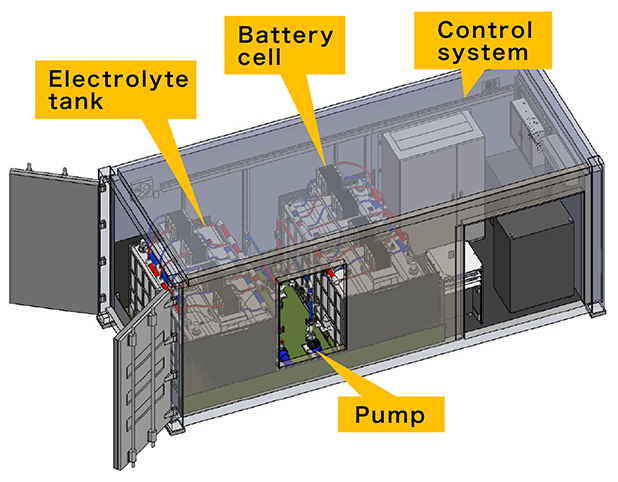
The actual device greatly composed of three parts.
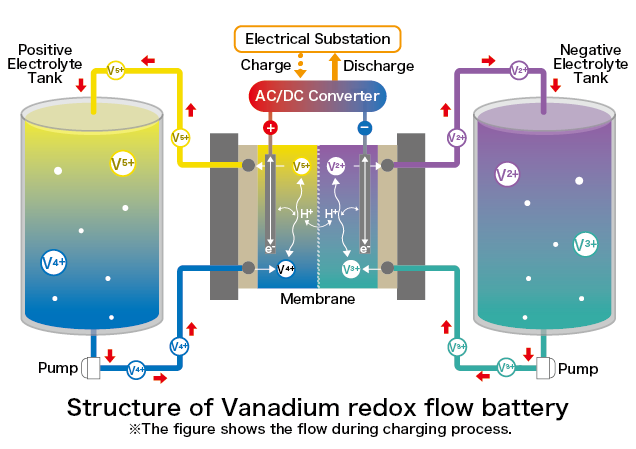
VRFB is a mechanism by circulating a liquid (electrolyte) with a potential difference between positive and negative electrodes, which cause the movement of electrons that provides charge and discharge process. While other storage batteries perform charging and discharging by chemical reaction of the electrode, charging and discharging of RFB is performed by chemical reaction (oxidation-reduction) of the electrolyte. Thus, it is possible to maintain for long period.
Since there is no need for heat resistance, the battery body have a long lifetime and the design can stand for 20 years. In addition, compared with other batteries which have a limited number of charge and discharge, the number of charge and discharge for RFB is unlimited, and its electrolyte can be used for a long-term. Thus, cost reduction after 20 years is possible.
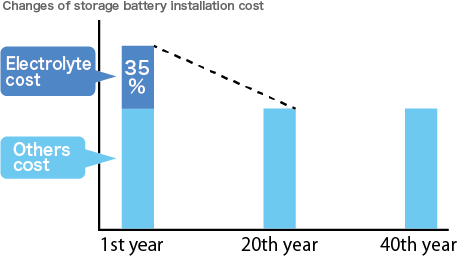

The electrolyte is non-flammable and the battery operates in room temperature, so there are no tendency of ignition or explosion.
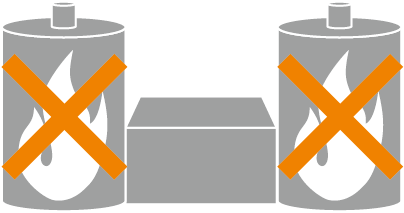
Since it is possible to adjust the storage capacity by the amount of electrolyte and the output by the size of the battery cell stack, it can be design freely based on output and charge capacity.
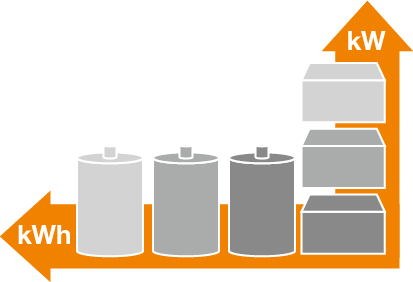
Storage battery are necessary for:
① Output variation relaxation: To reduce the output fluctuation.
② Smoothing:Controlling the difference power demand between day and night.
③ Emergency power supply:During emergency situation.
④ Smart grid
VRFB is scalable, and it is expected to be utilized for various energy construction in the future.
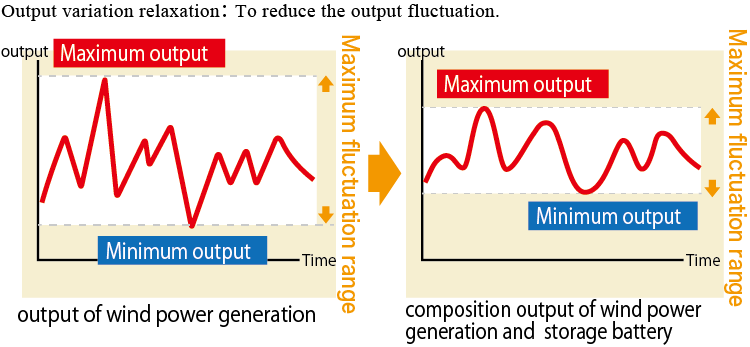
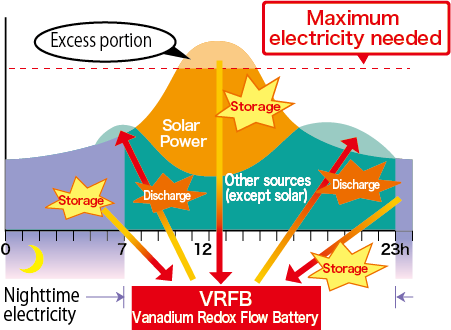
It accumulates by storing the excess photovoltaic power generation (during day time) or low price electricity during nighttime, then discharges it when photovoltaic power is not generated (example: during nighttime) or in the peak-hours (high demands).